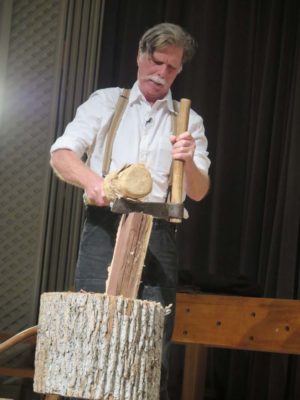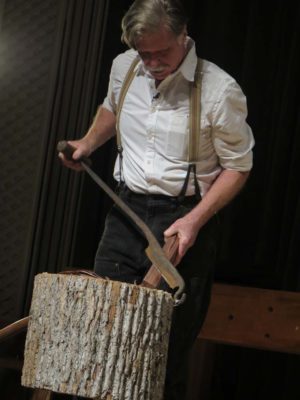WW18thC 2018 – Overview and Opening
I’ve been to several of Colonial Williamsburg’s annual confab Working Wood in the 18th Century (WW18thC), a gathering that always has a central theme of some sort. This year’s organizing topic was “Workmanship of Risk: Exploring Period Tools and Shops,” and it was my favorite of these conferences (although previous topics of “Surface Decoration” and “Oriental Influences” come in a close second tie). And not just because I was a speaker; that actually makes the experience less for me because of all the preparation work that consumes crazy amount of time and energy for me.
The presenters for this year included the crew from the Anthony Hay Shop, and their interpretation of a decorated tool chest; the Colonial Williamsburg joiners, demonstrating the consruction of monumental/architectural moldings; Jane Rees, the scholar behind the magnificent decorated lid of said tool chest; Peter Follansbee, recounting the processes of his work in carved 17th century oak furniture; Patrick Edwards, demonstrating classical marquetry techniques; and the inestimable Roy Underhill, with his keynote lecture and moderation of a panel discussion on historical primary sources; and me (more about that in subsequent posts).
There is no way to summarize the richness of the conference content without re-living it with verisimilitude, which could be accomplished only with a literal transcript and live video feed. But the next few posts will encompass my compressed take on the event.

As is the norm for this event, which normally sells every seat within the first few hours of opening the registration, every seat in the house was filled plus perhaps a few more. I know that often the deciding factor of whether or not some guest may attend a particular presentation is the occupancy limit established by the Fire Marshall. All the presentations are in the front of the auditorium on a small theatrical stage, making it difficult if not impossible for anyone beyond the front few rows to see the details of the proceedings. To alleviate that hurdle and enhance the learning experience for the attendees the entire performance is projected onto a giant screen behind the stage. It sometimes sets up the weird dynamic of us performing for the cameras, turning away from the audience.

Our start on the first evening was RoyUnderhill, undertaking the unenviable task of decoding philosopher/craftsman David Pye’s influential book The Art and Nature of Workmanship, a book, which Roy avers, has been read by few if any artisans (I think he is correct in this; I ground my way through it some 40+ years ago and never felt the desire to return to it. It’s on my shelf if the impulse ever emerges).



As always Roy was an engaging speaker even given the difficulty of the topic, and demonstrated some of the concepts contained within the risk vs. certainty discussion. Beginning with a mallet and froe to rive out some lumber workpieces, moving then to a hatchet, and finally to a sabot’s shave, he began the steps of workmanship that might not be “risky” in the hands of a skilled craftsman but certainly have a component of “uncertainty” to them, that uncertainly diminishing with each incremental step.

Roy ended up with an inventory of a complete tool box from ages past, using it and its contents as focal points for the soliloquy.


Join the Conversation!